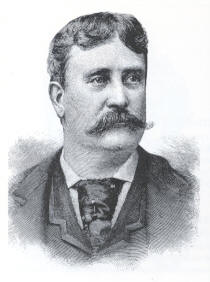Daniel Hudson Burnham (Daniel Hudson Burnham)

Architect. Known as”The Father of American City Planning”, he is best remembered for his direction of the World’s Columbian Exposition in 1892 to 1893, and for designing several famous buildings, including the New York City, New York’s Flatiron Building and the Postal Square Building in Washington, DC. Born in Henderson, New York and raised in Chicago, Illinois, Burnham was brought up by his church and his parents to believe that man should be of service to others. Failing to get into college, young Burnham became apprenticed as a draftsman under the famed architect William LeBaron Jenney, the “Father of the Skyscraper.” In 1870 he moved to the company of Carter, Drake and Wright, where he met his fellow draftsman and future business partner, John Wellborn Root. Following the Great Chicago Fire of 1871, any architect who could draw a line was provided work to help rebuild Chicago, and Burnham and Root used the opportunity to start their own architectural firm. The two men complemented each other perfectly; Burnham was the dreamer and politician for the firm while Root was an astute draftsman and physics genius. One of their first projects was the construction of a house for wealthy Chicago industrialist John Sherman; Burnham would marry Sherman’s daughter a year later. The two men were hired to design the Chicago Masonic Temple Building, which at 21 stories high (302 feet) would become the world’s tallest building at the time of its construction. In 1890, Burnham and Root accepted responsibility for overseeing construction of the World’s Columbian Exposition in Chicago, then the world’s largest fair and exposition, and named to celebrate the 400th anniversary of Columbus’s voyage to discover America. When his partner John Root died suddenly in 1891, Burnham took over as Director for Construction, and guided the Columbian Exposition management to overcome large financial and logistical obstacles in order to open on time and on budget. Due to its extensive neoclassical architecture, it became the model for many future cities as an example for other buildings. In 1909 Burnham prepared and published “The Plan of Chicago,” the first comprehensive master plan for the controlled growth of an American city, in which Burnham envisioned Chicago becoming a “Paris on the Prairie,” with French inspired public works, fountains, and tree-lined boulevards radiating from a central, domed municipal palace (city hall). Burnham would also help develop plans for the cities of Cleveland, San Francisco, Washington DC, and Manila in the Philippine Islands. Although famed architect of the Chicago school Louis Sullivan criticized Burnham for his lack of originality and his dependence on neo-classic designs, claiming that Burnham had “set back architecture fifty years,” the public and businesses thought differently. Burnham’s spirit and motivation was spurred by his oft-quoted statement, “Make no little plans; they have no magic to stir men’s blood and probably will not themselves be realized.” When Burnham died in Heidelberg, Germany, in 1912, at the age of 65, his architectural firm was the largest in the world and had become the model for global architectural businesses. (bio by: Kit and Morgan Benson) Family links: Spouse: Margaret Sebring Sherman Burnham (1850 – 1945)* Children: John Burnham (1878 – ____)* Hubert Burnham (1882 – 1968)* Daniel Hudson Burnham (1886 – 1961)* *Calculated relationship
Born
- September, 04, 1846
- USA
Died
- June, 06, 1912
- Germany
Cemetery
- Graceland Cemetery
- Illinois
- USA

